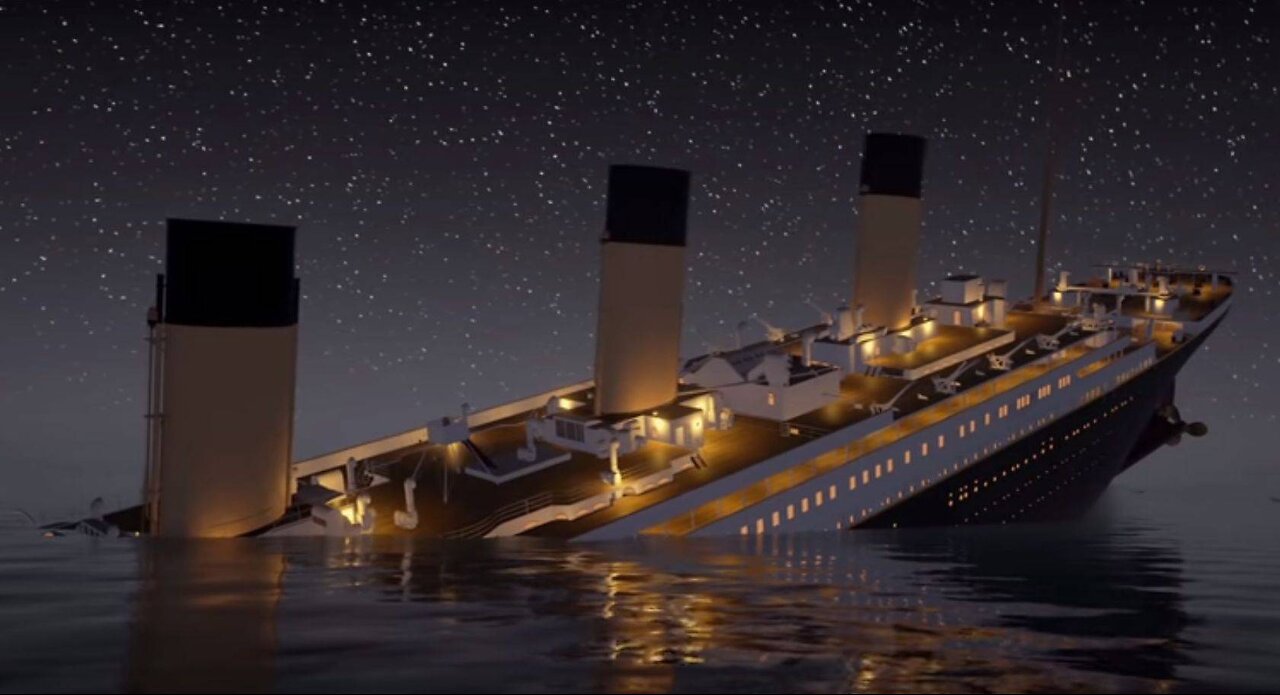Premium Only Content

How Titanic Sank
The sinking of the RMS Titanic occurred between the night of April 14 and the morning of April 15, 1912, in the North Atlantic, four days after the beginning of its maiden voyage, which began in Southampton, England, bound for New York City. York, in the United States. The Titanic was the largest passenger ship in service at the time, it had 2208 people on board when it hit an iceberg at around 11:40 pm (ship time)[a] on Sunday, April 14, 1912. The sinking took place two hours and forty minutes later at 02:20 (05:18 GMT) on Monday, April 15, resulting in the deaths of 1,496 people, making it one of the worst disasters in the history of shipping.
Titanic received six sea ice warnings on April 14, but was close to top speed when her lookouts spotted the iceberg. Officer William Murdoch ordered the rudder to turn all the way to starboard in an attempt to avoid the iceberg, but without success, as the ship collided with the iceberg, probably damaging six or seven watertight compartments. The Titanic was designed to float with four of her forward watertight compartments flooded, no more, and Thomas Andrews, the chief designer, soon realized that the ship was going to sink. The crew used flares and radiotelegraphy messages to seek help, while passengers were loaded into lifeboats. In keeping with existing practice, the Titanic's lifeboat system was designed to transport passengers to nearby rescue vessels, not to have everyone aboard one lifeboat simultaneously; so with the ship sinking fast and help still a long way off, there was no safe haven for many of the passengers and crew. With that and poor evacuation management, many boats were launched before they were completely full. So when the Titanic sank, over a thousand passengers and crew were still on board. Nearly everyone who jumped or fell into the water sank or died within minutes from the effects of hypothermia. The British passenger ship Carpathia recorded the Titanic's distress calls as it sailed some 93 km away. It deviated from its course and arrived at the site around an hour and a half after the sinking, rescuing the last survivors around 9:15 am on April 15, almost nine and a half hours after the collision. The disaster caused widespread outrage over the lack of lifeboats, lax regulations, and the unequal treatment of the three classes of passengers during the evacuation. Subsequent inquiries recommended sweeping changes to maritime regulations, leading to the establishment in 1914 of the International Convention for the Safety of Life at Sea (SOLAS), which still regulates maritime safety today.
-
 LIVE
LIVE
VINCE
2 hours agoFirst Signs That Trump's Tariffs Are Paying Off | Episode 15 - 04/04/25
61,776 watching -
 1:09:14
1:09:14
BonginoReport
5 hours agoMoral Relativism, Tesla Terrorists & the Left: Jack Posobiec and Evita Unveil the Truth (Ep.175)
104K37 -
 LIVE
LIVE
LFA TV
13 hours agoLFA TV - ALL DAY LIVE STREAM 4/4/25
1,787 watching -
 LIVE
LIVE
Major League Fishing
2 days agoLIVE! - MLF Bass Pro Tour: REDCREST - Day 2
460 watching -
![🔴[LIVE] Stock Market Crash: From BAD To WORSE! || The MK Show](https://1a-1791.com/video/fww1/48/s8/1/f/N/-/y/fN-yy.0kob-small-The-MK-Show-Apr.-4th.jpg) LIVE
LIVE
Matt Kohrs
12 hours ago🔴[LIVE] Stock Market Crash: From BAD To WORSE! || The MK Show
1,487 watching -
 UPCOMING
UPCOMING
The Big Mig™
4 hours agoPardon US: Justice For All w/ J6’r Daniel Goodwyn
222 -
 58:59
58:59
The Hannah Faulkner Show
13 hours agoHannah Faulkner and Dr. Simone Gold | NEW FDA DIRECTOR?!
2.16K1 -
 40:21
40:21
Randi Hipper
1 hour agoVOLATILE WEEKEND AHEAD FOR BITCOIN!
3.54K -
 32:20
32:20
Coin Stories with Natalie Brunell
15 hours agoBitcoin Revolution in Washington: Senator Lummis on U.S. Debt, Gold, Stablecoins & Dollar Dominance
7.86K3 -
 2:04:58
2:04:58
Game On!
16 hours ago $5.68 earnedFeel Good Friday! Breaking down the Final 4!
36.3K